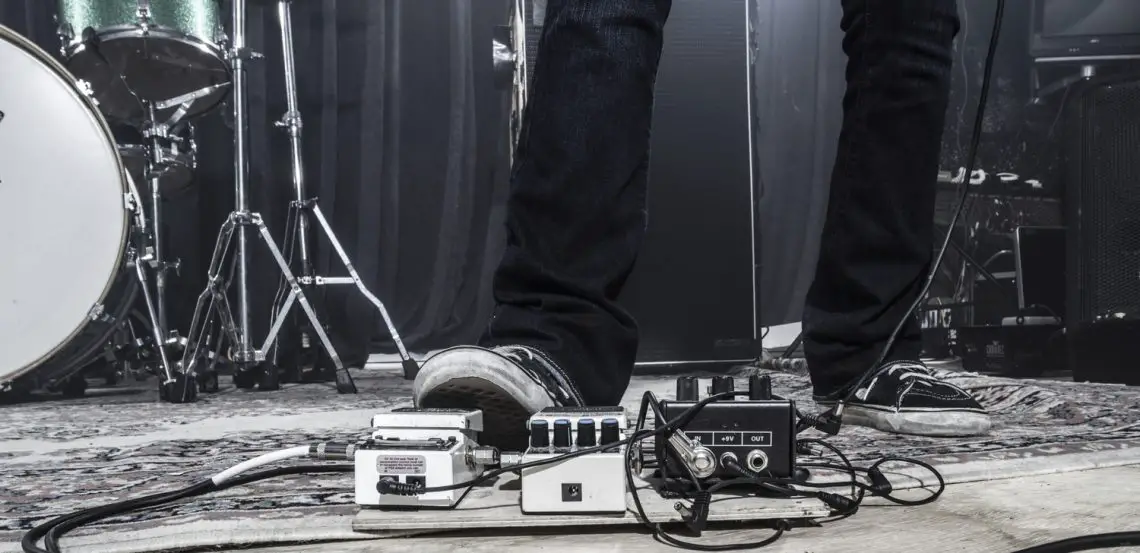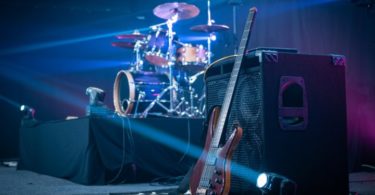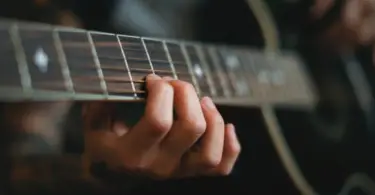Bassists probably have the widest range of sound processing tools available to them today than at any other time in musical history. Thanks to the innovations and R&D efforts of instrument and amp designers who have expanded the capabilities of the instrument and its amplification, pedal manufacturers have kept up with the challenge to deliver tone sculpting devices that are limited only by a player’s imagination.
Given the fact that the menu of choices is so voluminous, this overview will concentrate on those pedals in each category that are most widely commercially available and are priced at a working musician’s budget of under $250. While there are plenty of boutique and custom manufacturers that are making amazing units, they often can be costly and hard to track down to even purchase, let alone audition.
The focus will be on meat and potatoes pedals for the working bassist, so Whammy, Wah, fuzz, and other specialty pedals that might be redundant or exotic are not included in this overview.
In my 30+ years of recording and performing on guitar and bass, I am enormously impressed with the pedal choices bassists have in today’s market compared with the past. While some are still free to experiment, gone are the days of having to compromise sound by using an effect designed for a guitar and having to slavishly remix to get the bass tone to work with the effect because of the pedal’s preset guitar frequency response.
Some pedals now designed for bass actually work better for guitar nowadays than the ones originally created for guitarists, just like how the Fender Bassman amp became more popular with guitarists back in the day.
The bass pedal categories referenced in this overview: D.I. Preamp, Compressor, Envelope Filter, and Octave, are the primary ones that I have found are in demand for most genres of music. There are certain specialties, such as Fuzz Bass, that can be simulated by the D.I. Preamps or some of the others in this list, or chorus and flangers, which are modulation pedals that are used by some, but space limitations prevail, so these 4 should allow the majority of bassists to be able to handle most recording and performance gig requirements.
The Competition
After hours of testing and research, here's the final competition.
| Instrument | Rating | Current Pricing |
|---|---|---|
Aguilar Tone Hammer Bass Preamp Direct Box | Rugged construction and ability to utilize phantom power makes it very engineer friendly |  |
Eden WTDI Bass Direct Box Preamp Pedal | The compressor and enhancer are finely honed sound sculpting tools that also save on the need for external outboard patching |  |
Tech 21 Sans Amp Bass Driver DI V.2 | Designed for primarily for recording but also excellent for stage |  |
Ampeg SCR-DI Bass D.I. with Scrambler Overdrive | As a studio unit, it is very quiet and the ability to output separate dry and affected signals gives players a lot of flexibility in the mix |  |
Electro Harmonix Bass Preacher Compressor Sustainer Pedal/a> | Designed especially for bass |  |
Aguilar TLC Compressor Bass Effects Pedal | Extremely transparent and has a studio quality sound reminiscent |  |
Pigtronix Philosopher Bass Compressor Pedal | Wide range of musical and useful compression effects |  |
Keeley Bassist Compressor and Limiting Amplifier Effect Pedal | Bandwidth exceeds 20 kHz |  |
Electro Harmonix Enigma Q Balls Envelope | Q and Sensitivity knobs |  |
MXR M82 Bass Envelope Filter Effects Pedal< /a> | Solid sounds and a simple layout makes dialing in classic tones with ease |  |
MXR M288 Bass Octave Deluxe Effects Pedal | internal DIP switch to choose the frequency setting and a tiny screw to adjust the amount of boost |  |
Boss OC-3 Super Octave Guitar Effects Pedal | The OC-3 can track polyphonically for bass, which makes chordal octaves for bassists a reality |  |
D.I. Preamps
One of the primary challenges in recording and sound reinforcement for the bass guitar has been the reproduction of the pure sound of the instrument without the noise and the low-frequency tones that might be excessive and difficult to mix with other instruments.
To solve this problem, engineers have turned to low impedance Direct Injection (D.I.) boxes, which converts the signal from the bass (or the amp if equipped with a D.I. output jack) to a low impedance signal capable of being cleanly run through a console channel or other line level audio device to preserve maxi,u, fidelity. D.I. boxes are routinely used for keyboard instruments and often with acoustic instruments supplied with a pickup, such as piano, acoustic guitar or violin.
While engineers were thrilled, bass players, especially, came to dislike the fact that their onstage sound from their amps sounded noticeably different from the bass sound in the house. While some amp manufacturers had only started including D.I. jacks in their amps, most bassists wanted the post EQ preamp sound from their amps to be heard by the entire audience and not just the front rows.
Amp manufacturers took note and began installing pre and post EQ D.I. options as well as trying to put those elements into a single D.I. pedal. The result of their trial and error led to Tech 21 coming up with a bass version of their popular Sans Amp guitar pedal in 1992, which paved the way for rivals to build their own versions.
Aguilar Tone Hammer Bass Preamp Direct Box
View on Sam Ash View on AmazonFrom their Soho factory in New York City, Aguilar execs Dave Boonshoft and Dave Avenius run a ship that is dedicated to creating the finest gear available for bassists, from amps and speaker cabinets to pedals, pickups, and internal instrument preamps. Bassists around the world have responded favorably, and Aguilar artists include: Jack Casady, John Patitucci, Adam Clayton (U2), Gary Willis (Tribal Tech), Bakithi Kumalo (Paul Simon), and many others.
Constantly innovating, the company utilizes custom horn and crossover designs to maximize the range of sound frequency response in their cabs, and have made different amps in the past, but broke out into bass focused stompboxes after the success of their Tone Hammer Preamp Direct Box.
Design – Aguilar Adaptive Gain Shaping (AGS) circuitry, XLR direct output with pre and post EQ switch, ground lift, active cut and boost of treble, mid and bass with sweepable midrange frequencies, heavy steel chassis, 18 volt power via AC power supply, phantom power or (2) 9 volt batteries. Separate Engage (with blue LED) and AGS (with red LED) footswitches for choosing two separate sounds.
Features – The Tone Hammer is a military grade heavy duty pedal whose circuit was based initially on the popular Aguilar OBP-3 preamp, which is an onboard active EQ instrument mounted device. It is super quiet for recording purposes, and its rugged construction and ability to utilize phantom power makes it very engineer friendly, as well as saving pedal board space and AC feeds that could add noise or 60 cycle hum.
The AGS circuitry allows for the player to change the gain structure and essentially set up a sound accessible by the AGS footswitch. This can be a subtle setting to compensate for the differences between, say an active or passive bass, or a fretted bass and a fretless, to a clean vs distorted setting.
Summary – The overwhelmingly positive response to the Tone Hammer spurred Aguilar to design its best-selling Tone Hammer amp series around its circuit. It has quickly become go-to device for discriminating engineers and players alike for its great sound, reliability, and versatility. Current Amazon.com price: 
Eden WTDI Bass Direct Box Preamp Pedal
View on Sam Ash View on AmazonOriginally founded in Minnesota, Eden established itself as a hi-end boutique bass gear manufacturer and is now owned by Marshall Amplification in the UK. Their motto of “Hi Fidelity for Low Frequency” has caused Eden amps to be the preferred choice of Phish’s Mike Gordon, Richard Jones of Stereophonics, Johnny Chow of Stone Sour, Rocco Prestia of Tower of Power, and others. The Eden WTDI is their take on the Direct Box Preamp.
Design – XLR DI out, Ground Lift, Gain, Master Volume, Enhance, 3 band EQ knobs, Mid Shift and Bass Boost buttons, built in Compressor, footswitch and LED
Features – Taking the sound of their popular WTX amp series, Eden’s WTDI is basically a top flight Eden amp in a box with built in D.I., a compressor and an enhancer in a compact unit. The compressor and enhancer are finely honed sound sculpting tools that also save on the need for external outboard patching or DAW CPU plug in power to use during recording.
For stage performances, the WTDI can turn any clean amp platform into an Eden WTX clone or absolve the need for an amp entirely if patching directly into the P.A. such as in many House of Worship setups.
Summary – The Eden WTDI is a great bargain at 
Tech 21 Sans Amp Bass Driver DI V.2
View on Sam Ash View on AmazonNew York-based Tech 21 was founded by Andrew Barta in 1989, and when his initial Sans Amp design was turned down by all of the major pedal manufacturers at the time, Barta put it out on his own and revolutionized the direct recording and home recording industries, spearheaded by the Sans Amp’s tube amp emulation platform. A bass version was released in 1992 with a comparable impact for bassists. The Bass Driver DI V.2 is the latest, improved version. Tech 21 bass artists include Michael Anthony, Melissa Auf der Maur (Smashing Pumpkins), Aston “Family Man” Barrett of the Wailers, Les Claypool, Gail Ann Dorsey (David Bowie), Rob Trujillo (Metallica) and countless others.
A bass version was released in 1992 with a comparable impact for bassists. The Bass Driver DI V.2 is the latest, improved version. Tech 21 bass artists include Michael Anthony, Melissa Auf der Maur (Smashing Pumpkins), Aston “Family Man” Barrett of the Wailers, Les Claypool, Gail Ann Dorsey (David Bowie), Rob Trujillo (Metallica) and countless others.
Design – added ¼” parallel output, XLR Direct Out, buttons for phantom power and ground lift, +10 dB for mail output, -20 dB for XLR, Mid Shift (50 hZ – 1 khZ), Bass shift (40-80 hZ), Level, Blend, Treble, Presence, Drive, Mid, Bass knobs, footswitch. Powered by 9v AC power, phantom power or battery.
Features – Designed for primarily for recording but also excellent for stage, the Bass Driver can send a split signal for separate amps as well as reconfigure for optimum reproduction of 5 and 6 string basses. The Blend control allows for unprocessed and amp emulation mix levels. The phantom power option helps to eschew AC power that can cause potential 60 cycle hum.
Summary – The Bass Driver was a pioneering device and still has thousands of fans who swear by it for studio and stage. Tech 21’s current iteration addresses the trend towards even wider frequency spectrum reproduction and brings the same premium quality to the table at 
Ampeg SCR-DI Bass D.I. with Scrambler Overdrive
View on Sam Ash View on AmazonA longtime rival to Fender in the instrument amplifier field, Ampeg got its name from its first product in the 1940s, a pickup for upright basses that attached to the peg, hence the name, “Ampeg.” Their B-15 Portaflex amp found favor with many bassists in the 1960s, especially with electric bass pioneers like James Jamerson, whose innovative grooves created the Motown sound, and Donald “Duck” Dunn, whose basslines held down the bottom for Stax/Volt’s many R&B hits.
The Ampeg artist roster is enormous, as the Ampeg SVT is a standard must have amp for thousands of rock, pop, jazz and funk players. Darryl Jones (Rolling Stones), Gail Ann Dorsey (David Bowie), Robert Trujillo (Metallica), Les Claypool, Bootsy Collins, and Sting are just a few Ampeg bass players.
In the 1960’s, Ampeg’s most popular foray into pedals was the Scrambler, a fuzz pedal with an unpredictable octave sweep hint that gave it a very different sound from the Fuzz Faces, Tone Benders and Burns Buzzarounds of the day. Its best known showcases are probably in the solos of Jorma Kaukonen on the Jefferson Airplane’s albums, with “Somebody to Love: the best-known track. Ampeg’s modification of the Scrambler circuit for bass is the foundation of their SCR-DI Bass D.I. pedal.
Design – XLR D.I. out with ground lift, affected and unaffected ¼” outputs, headphone out, aux in, Scrambler footswitch, drive and blend knobs, Volume, 3 band EQ and Aux level knobs, footswitch, ultra low and ultra hi knobs, and uses 9-12v AC power supply – all in a die-cast zinc chassis.
Features – Ampeg touts that its new Scrambler circuit was designed to deliver “true SVT grit, grind and sag”. As the massive tube powered Ampeg SVT is as much a bass staple as a Marshall Plexi is for guitarists, Ampeg is clearly playing to its loyal followers. The SCR-DI’s Scrambler circuit is the same as the one found in Ampeg’s popular BA amp series.
As a studio unit, it is very quiet and the ability to output separate dry and affected signals gives players a lot of flexibility in the mix. The Aux in and headphone jacks also make the SCR-DI ideal for recording and private solo practice. For stage, the heavy duty zinc chassis and metal and dual footswitches give players the choice between a B-15 and an SVT with just a tap on the footswitches.
Summary – Ampeg’s “SVT in a box” is a great recording and practice tool as well as for those who want the option to get SVT sounds in an otherwise clean bass platform onstage. Current Amazon.com price: 
Compressors
Technically, compression is the electronic reduction of dynamic range, i.e., the difference between the softest and loudest sounds is reduced so that the perceived overall volume level of the sound is more even.
Compression originally was developed to act like an automatic fader to even out instances when a singer’s or musician’s difference between the softest and loudest notes in a performance was too wide. By reducing the overall gain, the result was a smoother listening experience.
Compression is often used to make snare drum hit volumes and bass notes sound more uniform in the rhythm section and is a staple for singers, especially those who may range from a whisper to a shout.
Compression is also a means to achieve a clean sustain, as opposed to the sustain derived from a fuzz or distortion pedal. As a plucked note starts to decay, the compressor senses the volume decrease and boosts the level of that note until the decay is final or the next note is played.
Electro Harmonix Bass Preacher Compressor Sustainer Pedal
View on Sam Ash View on AmazonFounded in the late 1960’s, Electro Harmonix was one of the first specialty guitar pedal effects companies and is probably the oldest one still active. Mike Matthews’ Black Finger compressor was one of the very early pedal versions of compressors that had previously only been available in studios, either tube powered like the Fairchilds used on Beatles’ records, or the U.A. LA-2, which is still in use today. The Bass Preacher is a bass specific version of the popular Electro Harmonix Soul Preacher compressor.
Design – Vol, Sustain knobs, 3 position switch for fast, medium or slow attack. 9v AC or battery powered.
Features – Designed especially for bass, the Bass Preacher can automatically accommodate both active and passive pickups, with a -10 dBu to +2 dBu sensitivity range. Maximum gain reduction is 21dB and compression can range from subtle limiting and evening out of notes to a fully squashed tone effect. The 3 attack settings combine with the compression for smooth or aggressive, in your face sounds.
Summary – At 
Aguilar TLC Compressor Bass Effects Pedal
View on Sam Ash View on AmazonAguilar’s compressor pedal uses Trans Linear Control (TLC), which Dave Boonshoft describes as, “enables us to create a compressor with very high performance. It’s a feed-forward design with “medium knee” that is very musical. The slope goes to infinity, which is unusual in a stomp box, it’s very easy to adjust attack, threshold, slope and level to get exactly the compression characteristics that you want. The low end is full and clean, and it also kicks butt on guitar.”
Design – Level, Threshold, Attack and Slope knobs, footswitch, 9v AC power or battery. Steel chassis.
Features – Aguilar’s TLC compressor is extremely transparent and has a studio quality sound reminiscent of the venerable UREI 1176 (I actually owned a pair, so that is my frame of reference for standard of excellence). The controls are also similar to that of a rack-mounted studio unit.
TLC has an automatic bypass circuit so that if a battery dies, the signal will still be routed through the output. While squashed tones are available, they are pristine and are not accompanied by grit and noise that are common with most stompbox compressors. (<0.2% distortion spec) Also excellent for guitar.
Summary – Aguilar’s TLC is a different approach towards a compressor pedal and worth consideration, especially if a player is seeking more of a studio compression tone as opposed to that of conventional pedals. Current Amazon.com price:
Pigtronix Philosopher Bass Compressor Pedal
View on Sam Ash View on AmazonBased in Long Island, NY, Pigtronix is a high-end boutique effects manufacturer that has begun to get a lot of attention due to their versatile and tweakable line of unique sounding pedals. Pigtronix bass artists include Bootsy Collins, Tony Levin, Verdine White, Victor Wooten, Stu Hamm, and others. The Philosopher Bass is a bass version of the popular Pigtronix Philosopher’s Tone compressor pedal.
Design – Vol, Compression, and Sustain knobs, Grit toggle switch, footswitch, 9-18v AC power only.
Features – With a deceptively simple control array, the Philosopher Bass pedal has a wide range of musical and useful compression effects. Unlike the Aguilar TLC, it has a Grit switch to intentionally add harmonic distortion for added effect, especially on 5 string basses. The 18-volt power option gives the Philosopher Bass added headroom for cleaner response.
Summary – The Philosopher Bass pedal gives that popular effect a bass-centric customized unit that delivers a compression tone that is suitable for funk, prog rock, R&B, jazz, and other music genres, and at 
Keeley Bassist Compressor and Limiting Amplifier Effect Pedal
View on Sam Ash View on AmazonRobert Keeley Engineering is another specialty effects manufacturer that has garnered raves from many artists. Based in OK, Keeley started off doing custom mods for popular modulation, overdrive and distortion pedals (which his shop is still known to do), that attracted the attention of artists like Peter Frampton and Brad Paisley.
His business has grown exponentially to where Guitar World referenced his company as “one of the world’s top sellers of guitar effects pedals.” His Keeley Compressor is one of his best-known devices, and the Bassist Compressor and Limiting Amplifier pedal is his bass version.
Design – Compression, Threshold and Gain knobs, footswitch, 9.6 v AC only.
Features – Using a similar feed forward system as the Aguilar TLC but with ultra high-grade components and a design that includes op amps, voltage controlled amplifiers and an on board true RMS detector, the Keeley Bass compressor is another ultra clean and quiet studio-grade compressor in a box.
Total Harmonic Distortion is <0.1%, and bandwidth exceeds 20 kHz, which is at the limit of human hearing. The RMS detector contributes to a smooth operation with less need for added knobs, since the attack and release times can be adaptive to playing styles and the signal input level, so the unit intuitively responds based on how hard and fast one strikes the notes.
Summary – The legendary Keeley compressor quality customized for bass 
Envelope Filters
If there is any effect that has become more popular with bass than with guitar, it is probably the envelope filter. The quacky sound of an envelope filter has become synonymous with funk bass as popularized by William “Bootsy” Collins, of Bootsy’s Rubber Band and Parliament Funkadelic. His combination of grooves, slapping and envelope filter in the 1970s influenced generations of players from contemporaries like Verdine White (EWF) and Stanley Clarke to new stars like Nik West.
Electro Harmonix Enigma Q Balls Envelope Filter for Bass Effects Pedal
View on Sam Ash View on AmazonDesign – Blend, Mode (low, high and band pass), Attack, Decay, Start, Stop, Q and Sensitivity knobs, footswitches for distortion and bypass, dry and wet outputs, expression pedal input, 9.6 v AC powered.
Features – Electro Harmonix’s Q-Tron combines a specially bass voiced (40 hZ – 3 kHz) envelope filter with the Q Tron’s popular filter sweep and an analog distortion circuit for subtle grind to a fuzz bass attack for solo lines. An expression pedal input allows for pedal controlled filter sweep, and turn the Enigma into a wah wah pedal.
Summary – 
MXR M82 Bass Envelope Filter Effects Pedal
View on Sam Ash View on AmazonDesign – Dry, FX, Decay, Q and Sensitivity knobs, footswitch. 9v AC powered.
Features – With a standard MXR stompbox footprint case, the bass-voiced M82 delivers analog envelope filter funk sounds in a compact and intuitively easy to use unit. Solid sounds and a simple layout makes dialing in classic tones with ease.
Summary – 
Octave Pedals
Bassists seeking bigger and more awesome depth and range sounds started using octave divider pedals soon after they were available to guitarists since not everyone could obtain a 12 string Hamer bass like Tom Petersson of Cheap Trick. Sub-octave bass sounds generated by synthesizers that were used on disco, R&B, and early forerunners of Electronic Dance Music by artists like Kraftwerk, Yellow Magic Orchestra and the Terry Lewis and Jimmy Jam team led bassists to explore the possibilities of their instruments further, demanding greater headroom and power handling capability from their amps and speakers to accommodate these sounds that were outside the physical realm of their instruments.
In general, octave pedals, whether they multiply or divide the original input signal, need a strong, clean, clear note or notes from which to pitch shift. As a result, most of them work best at the beginning of any signal chain. Notes that have been modulated or distorted, where their fundamentals are indistinct, can result in unpredictable and often harsh sounding results.
MXR M288 Bass Octave Deluxe Effects Pedal
View on Sam Ash View on AmazonAfter Electro Harmonix, MXR is the next oldest brand of effects pedals specialists. Presently owned by Jim Dunlop, MXR is producing updated versions of their classics as well as continuing to evolve their product line to suit changing demand. MXR artists mirror the history of popular music since 1970, and pretty much any professional guitarist or bassist active prior to 1990 has used MXR pedals at one point or another.
As bassists enjoy expanding their sonic palettes given the popularity of 5 and 6 string basses, the MXR M288 Bass Octave is a sturdy pedal designed for 1 and/or 2 octaves down for truly subsonic rumble.
Design – Growl, Dry, Girth knobs, Mid boost button, footswitch, internal DIP switch and trimpot.
Features – With a Growl knob (-1 octave), a Girth knob (-2 octave) and a Dry knob for adjusting the amount of original signal from the instrument, the MXR 288 also has a mid + button that can revoice the pedal with up to +14 dB midrange boost at either 400 and 850 hZ. There is an internal DIP switch to choose the frequency setting and a tiny screw to adjust the amount of boost.
Summary – For bassists looking to shake walls or to recreate some of the synth bass lines that are outside the range of even a 5 or 6 string bass guitar, the M288 will deliver. Current Amazon.com price:
Boss OC-3 Super Octave Guitar Effects Pedal
View on Sam Ash View on AmazonBased in Japan, Boss is the pedal division of Roland, and since the 1970s, has pioneered many design features that have become standards of the effects pedal industry, including size, configuration of knobs, 9v AC jacks, etc. The roster of Boss pedal users is gargantuan and is likely more ubiquitous than that of MXR or Electro Harmonix despite Boss being the younger company. The Boss OC-3 offers 2 sub-octave tones and a few other features not normally associated with octave dividers.
Design – Level knobs for Direct, – 1 octave; level knob for poly, – 2 octave or drive (distortion) setting; 3 position knob for the latter, Boss footswitch with battery compartment
Features – Though not true bypass, the OC-3 is a buffered pedal with excellent tracking. It can deliver – 1 octave separately or concurrently with choice of – 2 sub-octave, polyphonic, or distortion modes. Unlike its competitors, the OC-3 can track polyphonically for bass, which makes chordal octaves for bassists a reality.
Summary – While bassists often choose the Boss OC-3 for its ability to deliver -1 or -2 sub-octave sounds with excellent Boss quality, the OC-3 also has adherents in the guitar world as it can also track in a polyphonic mode all for 
My Top Choices:
D.I. Preamp
I have personally used the Aguilar Tone Hammer on a number of recordings and it has never failed to impress me for dialing in just the right sound needed for a track. The Sans Amp is a reliable standby, but the Tone Hammer allows both my Thunderbird and Jazz Bass to dial in exemplary sound to complement the drums and other instruments at any given time. The others are excellent, but to my ear, seem to favor the amp sounds of their respective brands.
Compressor
The Keeley and the Aguilar are neck and neck, but the Keeley probably has the edge due to higher rated components and the no fuss RMS detector, which is something featured on certain rack mount compressors such as those from DBX or Alesis.
Envelope Filter
The Enigma delivers great bang for the buck, and can also serve as a distortion fuzz or a wah wah. There are more elaborate units by companies such as Source Audio, but their extra tweak ability, an asset in the studio, can be a liability onstage.
Octave
The Boss OC-3 delivers 2 sub octaves along with distortion and polyphony. Even if it was more expensive, it would be worth it for the ability to get octave effects on chords and then switch to a fuzz bass with octaves in mono mode.
I am certain everyone has their own favorites and many will probably disagree with my choices and conclusions, but remember, it’s all subjective, so what works for Flea or Sting may not necessarily work for you. The good thing is that there is a huge catalog worth of effects to help you sound like you.




















Start the discussion at talk.hearthemusicplay.com